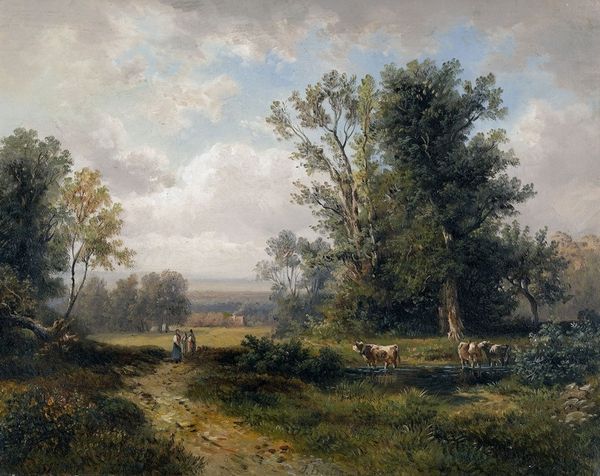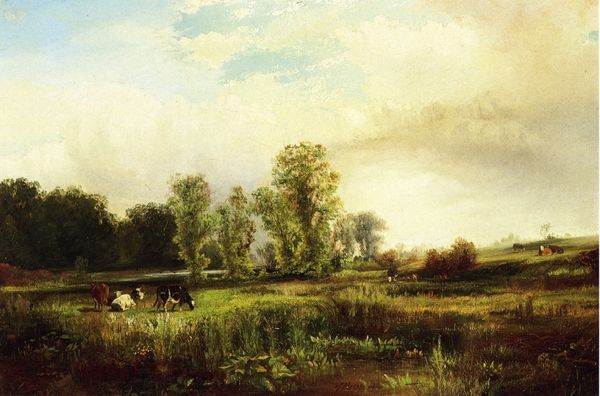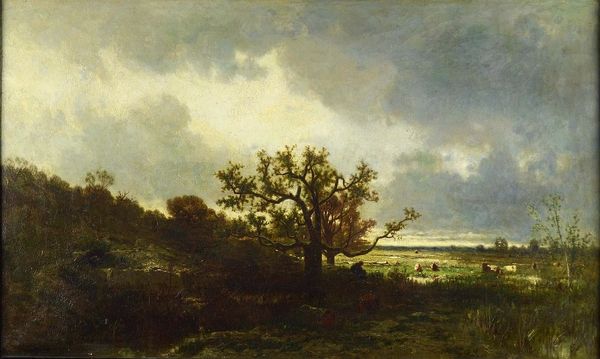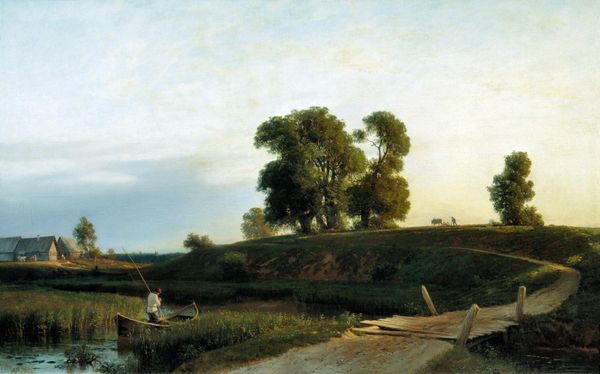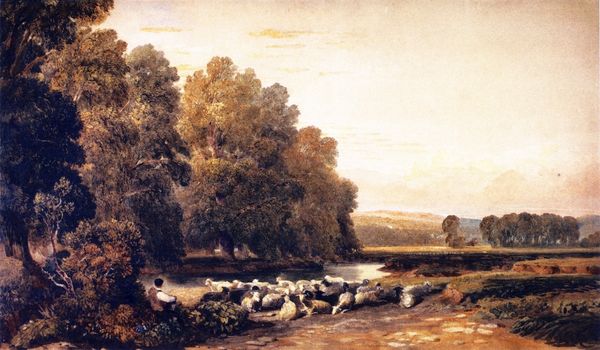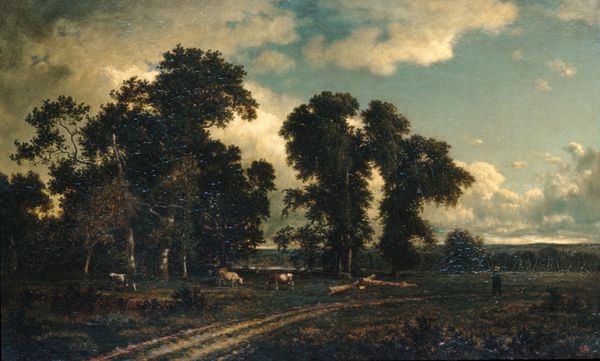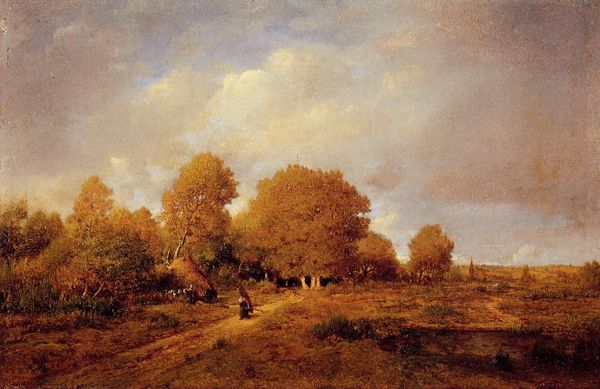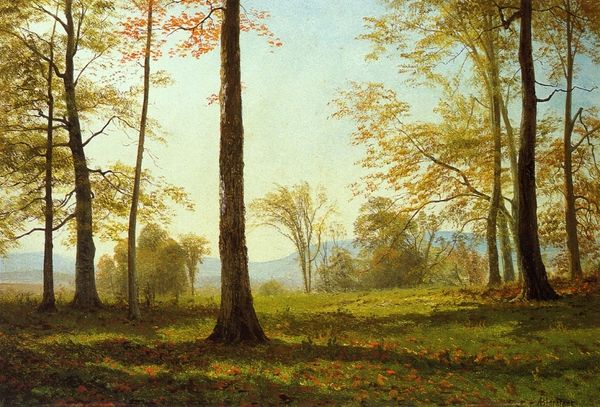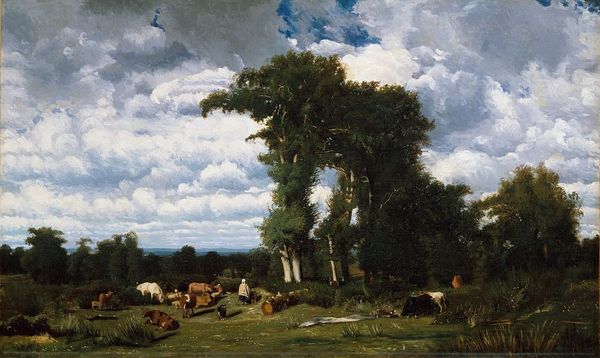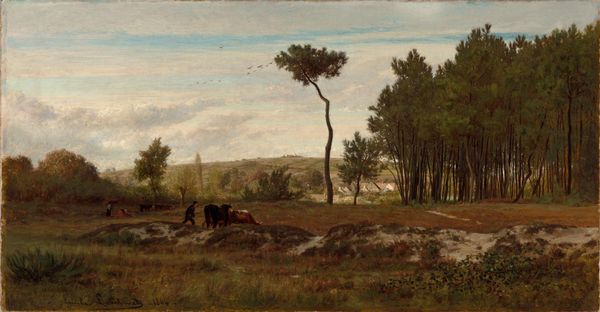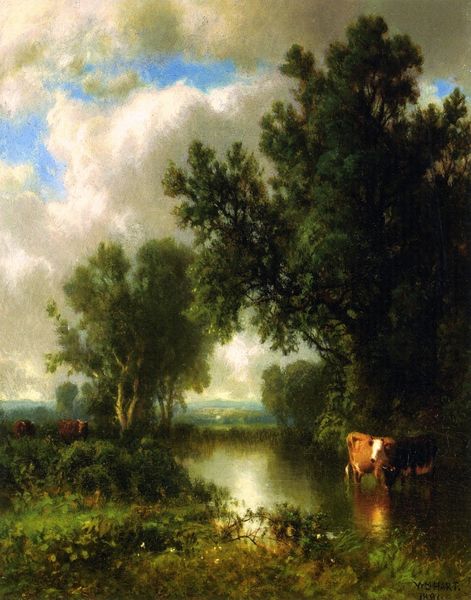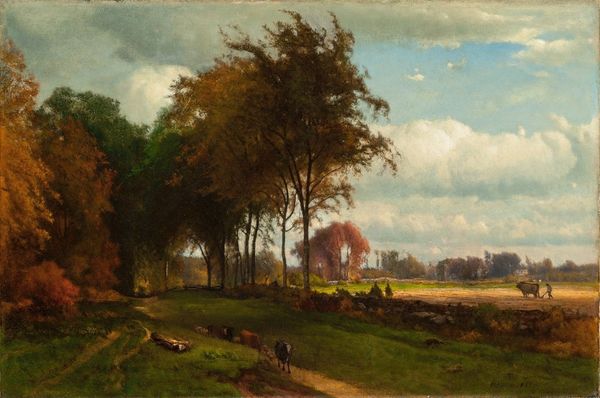
painting, plein-air, oil-paint
#
tree
#
still-life-photography
#
narrative-art
#
rural-area
#
painting
#
plein-air
#
oil-paint
#
landscape
#
figuration
#
oil painting
#
natural-landscape
#
hudson-river-school
#
naturalism
#
realism
Copyright: Public domain
Curator: "Scene near Albany," painted in 1873 by William Hart, immediately suggests a certain melancholic quietude to me. Editor: Yes, I see it too. The subdued palette contributes to that mood, and the composition seems carefully constructed to evoke that feeling of peace and resignation. It looks like he used oil on canvas, but what's most compelling is how Hart’s painting practices were shaped by a desire to visualize America. He travelled extensively, documenting rural labor and landscapes with his brother, James Hart. Curator: Agreed. Thinking about materiality, Hart likely used mass-produced pigments, right? This affected not only his practice but also the reception of his landscapes. His style aligned with the Hudson River School, portraying a harmonious coexistence between nature and agricultural activity. This depiction naturalized the socio-economic relations tied to land use and development at the time. Editor: Precisely. And notice how the brushstrokes create varied textures. The density in the trees contrasts sharply with the smoother finish in the sky and distant hills. This isn’t merely representational. Look how the light filters and shapes those leaves to define a formal unity that echoes the quiet labor being done at its right. The overall design points to an underlying symbolic order. Curator: A very controlled scene; cows and farmhands look passive—almost props within a romanticized idea of labor and naturalism that denies tension within the rural economy. Perhaps this passive attitude stems from their function in paintings designed to promote not only landscape appreciation but national identity. This aesthetic approach obscured the environmental impact of these developing rural regions and reinforced the dominant capitalist view. Editor: But what is undeniable is Hart’s deft handling of color. He plays cool blues and grays against the warmer browns and greens. The entire canvas vibrates with a carefully orchestrated chromatic scale! A system within which cultural anxieties are encoded, even subconsciously. Curator: Ultimately, a study of this artwork prompts questioning our assumptions. Beyond just admiring Hart’s artistry or lamenting how ideologies of "progress" hide within landscapes, thinking of these artifacts materially makes their cultural labor visible, creating opportunities to revisit and possibly reassess its history. Editor: I think I am inclined to see it as an expression of national Romanticism; that delicate, yet structured composition draws my eyes into its space again. It will be fruitful to observe this interplay more attentively, to truly absorb and engage this convergence.
Comments
No comments
Be the first to comment and join the conversation on the ultimate creative platform.
